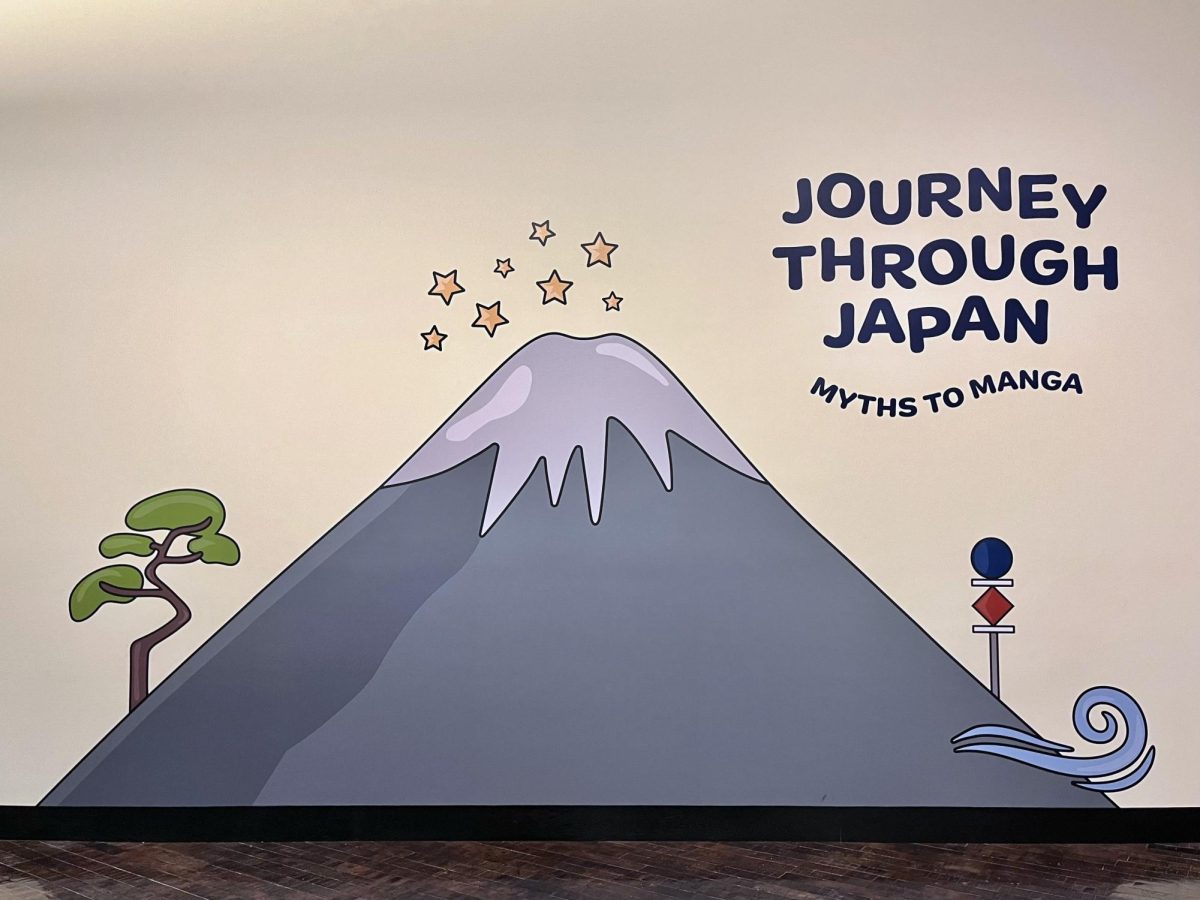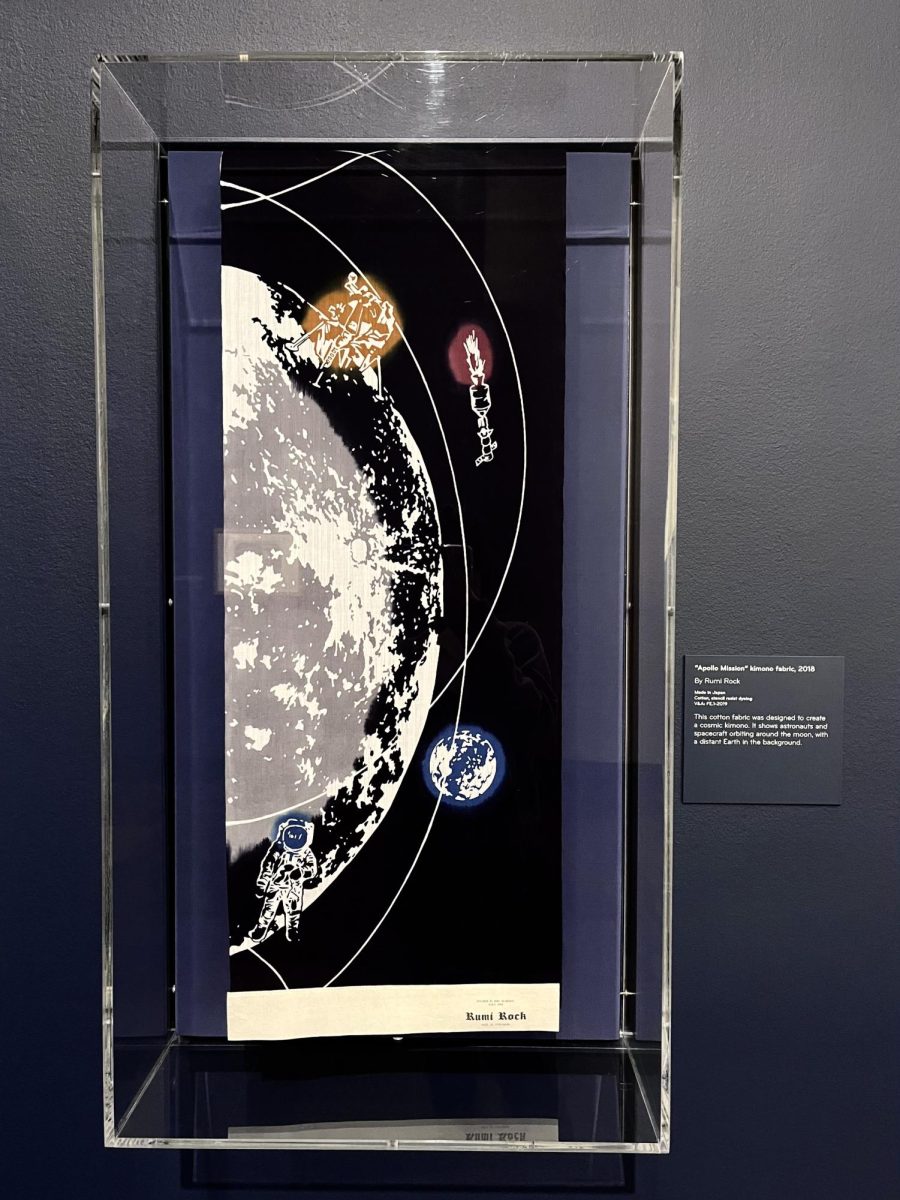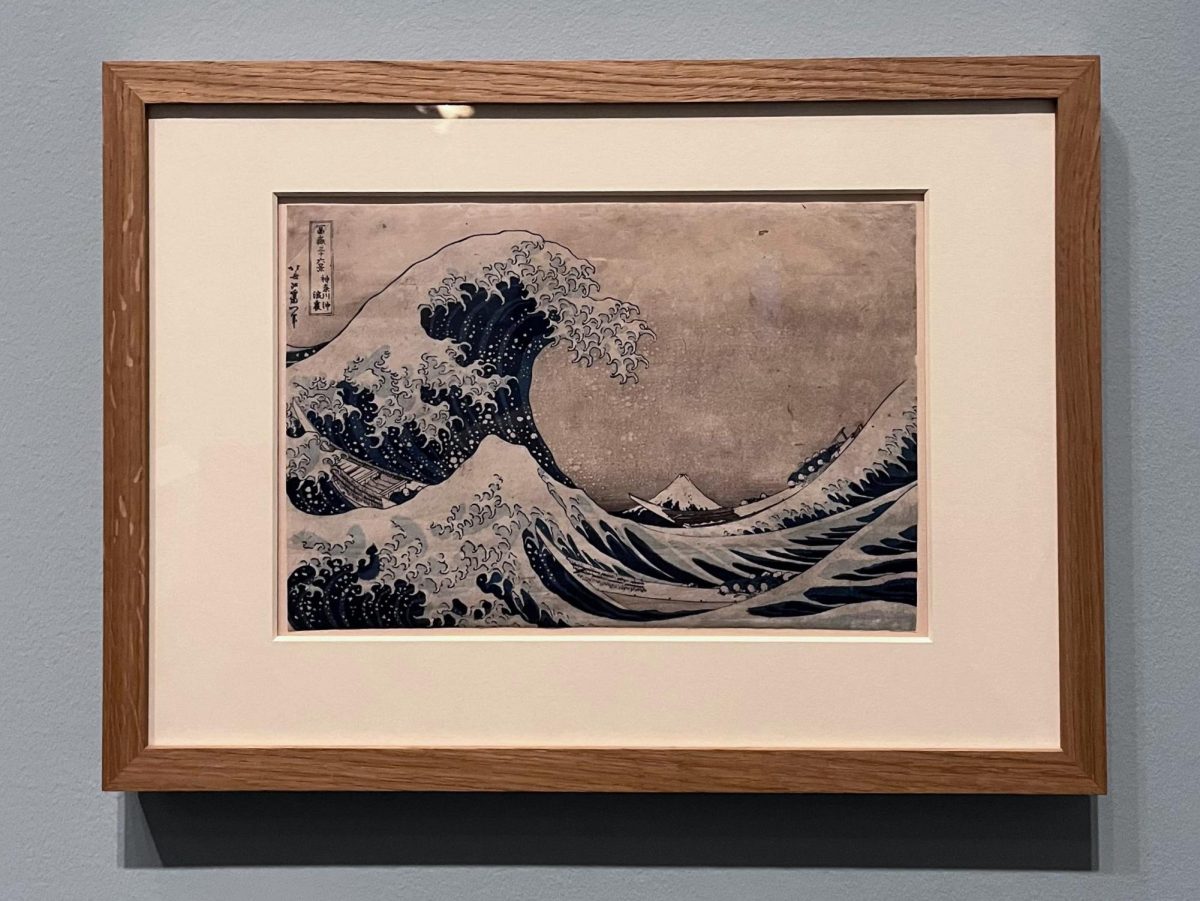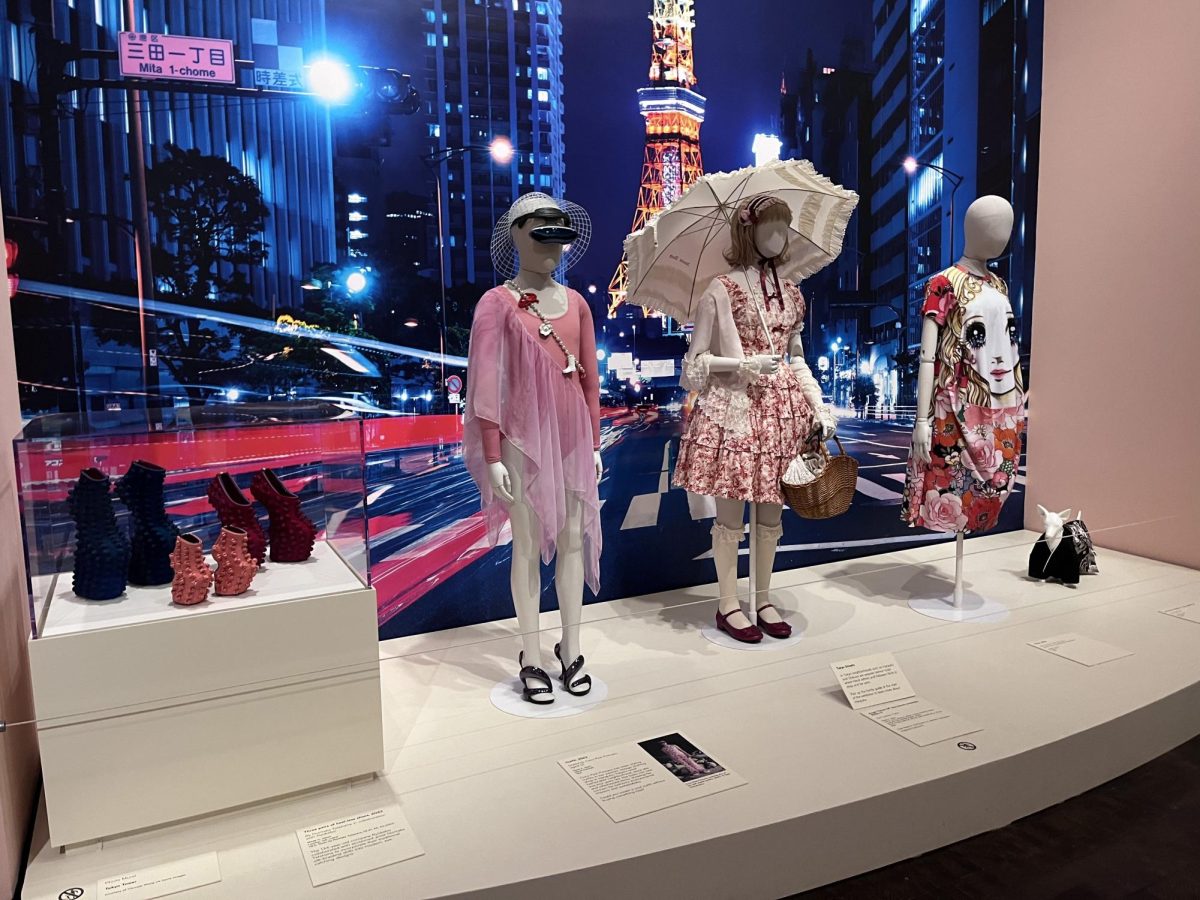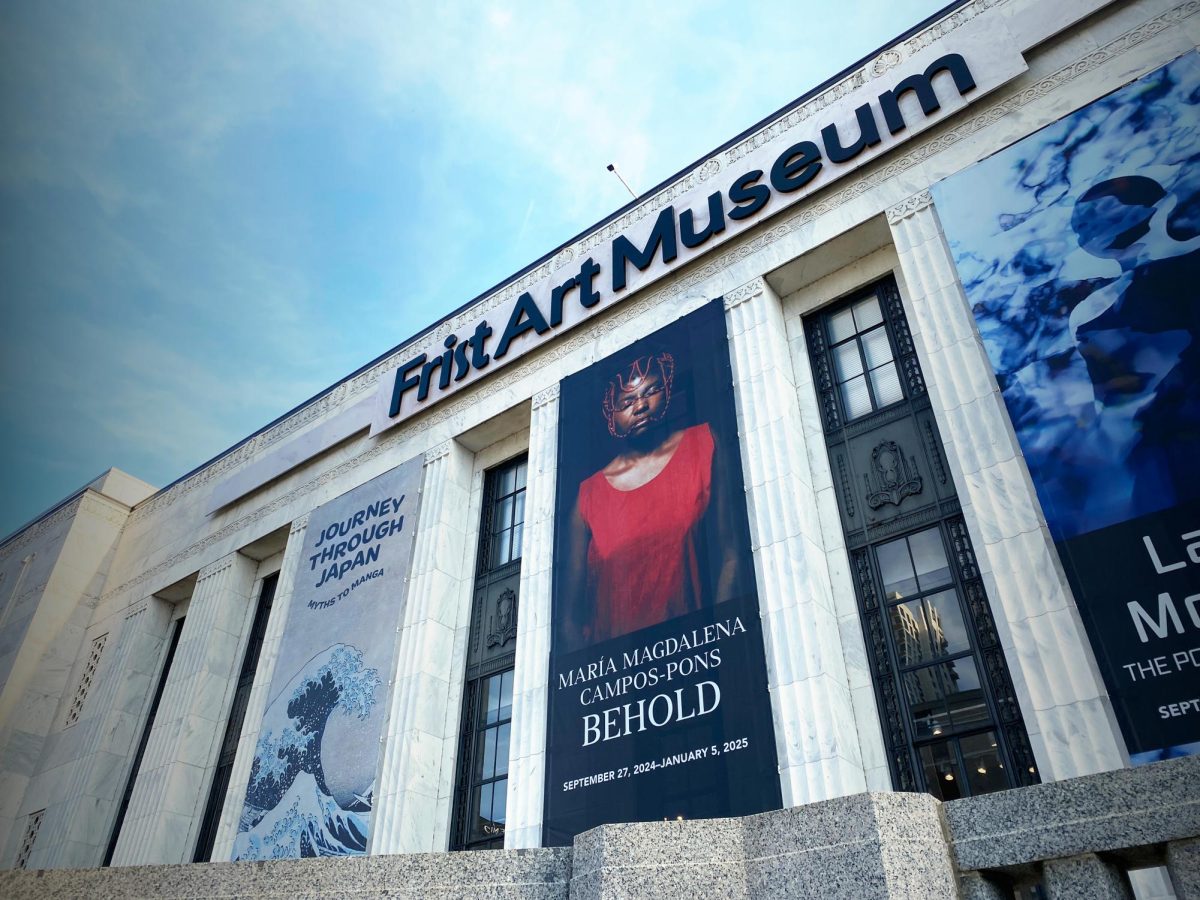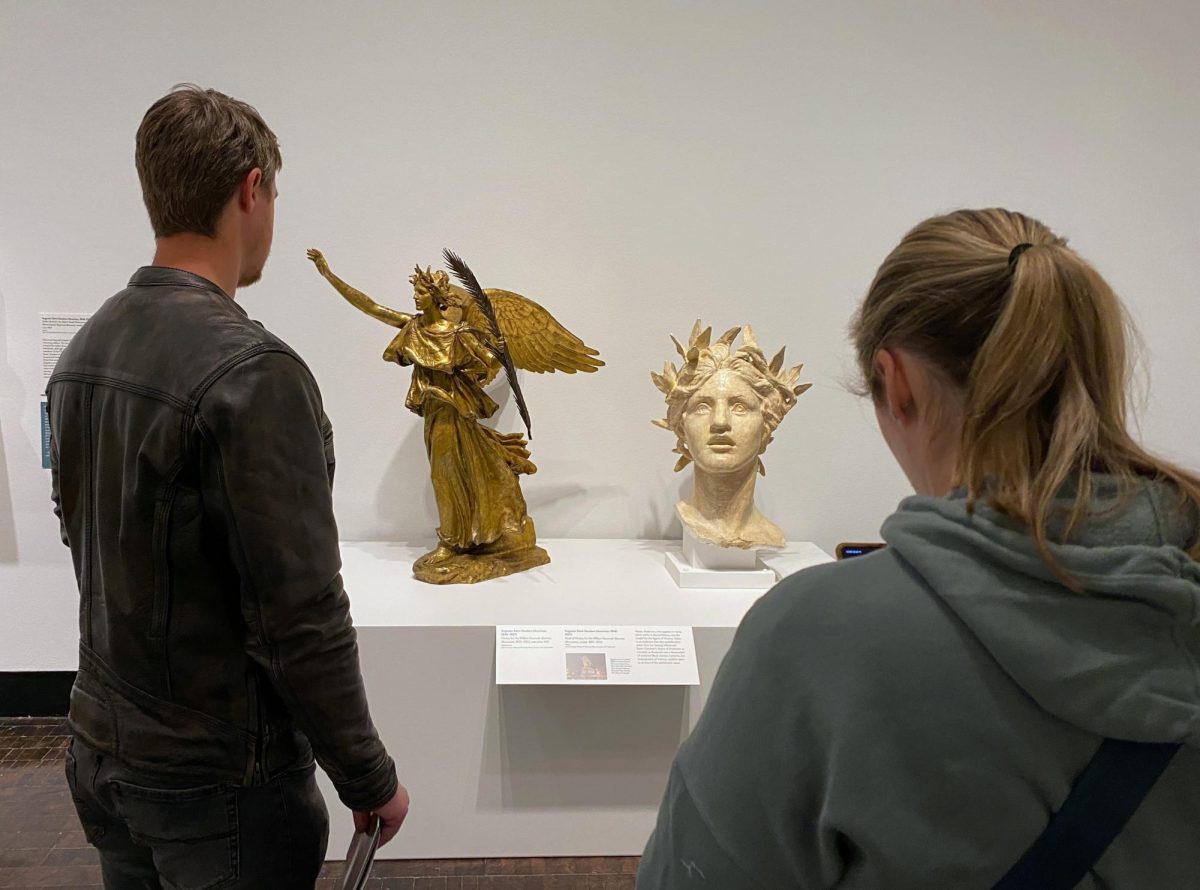The Frist Art Museum, located on Broadway in Downtown Nashville, stands out for its lack of a permanent collection. Instead, it hosts rotating exhibitions that bring diverse art from various cultures and eras to the city. Each exhibit offers a chance to explore new perspectives. The recent exhibition, “Journey through Japan: Myths to Manga,” delves into Japan’s rich history, tracing the evolution of folktales and artifacts into modern media and design.
The Frist itself is a reservoir of history. Housed in a striking Art Deco building originally constructed as a post office during the Depression, it was transformed into a museum in the late 1900s under the leadership of Vanderbilt alum Thomas F. Frist Jr. (B.A. ’61). Conveniently located just a 10-minute bus ride or 30-minute walk from Vanderbilt’s campus, the museum offers tickets to college students (with ID) for $16 or free admission on Thursdays from 5–8 p.m. CST.

One of the first pieces in the “Journey Through Japan” exhibition features three hanging arrangements of colorful origami cranes, known as senbazuru or “one thousand paper cranes.” According to tradition, folding a thousand cranes grants a wish. These senbazuru were created by schoolchildren in honor of Sasaki Sadako, a 12-year-old girl who became fatally ill after the destruction of her home city, Hiroshima, by an American atomic bomb. Sadako folded a thousand cranes, wishing for her recovery, but tragically passed away. This piece highlights a somber chapter of Japan’s history, setting a reflective tone and transitioning visitors into the exhibition’s first section with a metaphorical sense of flight.
The Sky
In this section, the moon appears in many forms, including a striking sheet of kimono fabric. “Apollo Mission” by Rumi Rock depicts a grand, cratered moon with spacecraft, an astronaut and a distant blue Earth, all streaked with white orbital lines. The repetition of round shapes extends even to the splotches of dye, which are the only dots of color against the black expanse of space. The night sky theme continues with porcelain pottery, rabbit-shaped mochi, vivid prints, retro space toys and illustrated animation sheets from the iconic Japanese anime “Sailor Moon.”
The sunrise emerges in the tale of Amaterasu, the sun goddess. During a fit of fear, she sealed herself in a cave and, in the process, took all sunlight with her. To bring light back, 800 deities gathered to make music and noise until she was curious enough to come out, a scene which is shown in the print, “The Origins of Sacred Dance at the Heavenly Rock Cave” by Utagawa Kunisada. Beneath the artwork, taiko drums—like those featured in the previous artwork—invite visitors to call out to Amaterasu themselves.
The Sea
The next room dives into the sea with glowing paper lanterns in the form of aquatic creatures swimming above. There are many orange and white goldfish, jellyfish, sea turtles and even a whale. Their soft, warm light provides a lovely ambience for the artwork in this space.
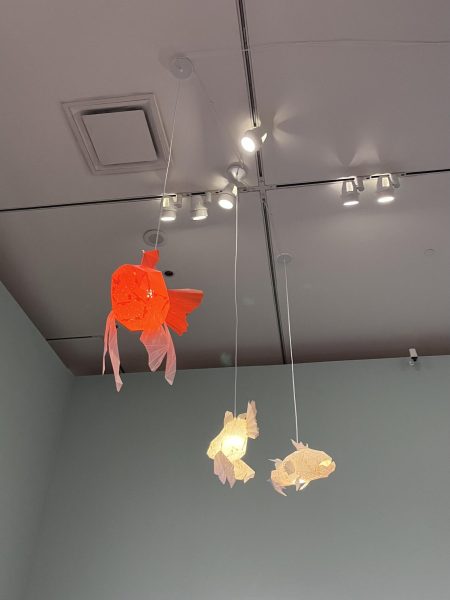
One of the highlights is the famed woodblock print, Under the Wave off Kanagawa, also known as “The Great Wave,” by Hokusai. The towering wave looms over wooden boats, poised to engulf the sailors below. The seafoam twists into predatory claws, and the immense water mass dwarfs Mount Fuji in the background, which almost melds into the ocean. Hokusai’s composition powerfully captures the ocean’s awe-inspiring and unforgiving strength, a force that surrounds Japan on all sides.
The exhibition also introduces gods, heroes and mythical beasts, some of which have become modern symbols. Among them is the namazu, a giant catfish believed to cause earthquakes and tsunamis with its tail. Today, catfish are used as logos and mascots for disaster prevention, as shown in the documents on display. Alongside reverence and caution for the sea, the exhibit reflects a deep love for its beauty. Artifacts, ceramics and toys inspired by the ocean abound, while a T.V. screen features clips from “Children of the Sea” and Studio Ghibli’s “Ponyo,” showcasing children joyfully engaging with sea life.
The Forest
The woods bring stories about Momotaro, the hero who was born from a peach, and yokai, supernatural creatures of Japanese folklore. The section features prints, figurines and artifacts, including a screen divider intricately embroidered with mischievous animals. Clips from Studio Ghibli films, “My Neighbor Totoro” and “The Tale of Princess Kaguya” play in a forest-themed reading nook with tree-stump seats.
Utagawa Hiroshige II’s “Basket Ropeway in Hida Province” demonstrates a fascinating facet of former life in the forests of Japan. The print depicts a man and woman crossing a deep river gorge in individual baskets suspended by ropes—a perilous “journey through Japan.”
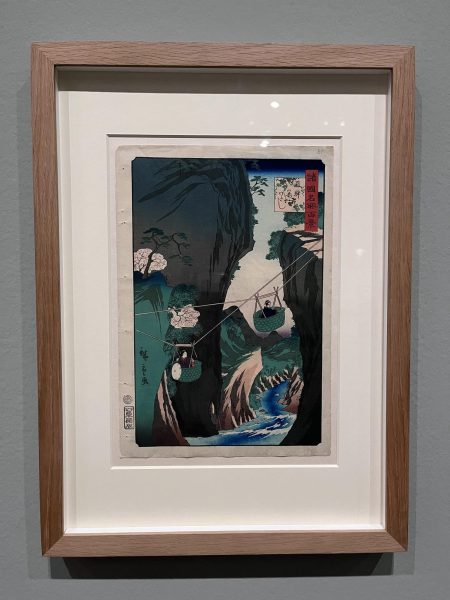
(Jocelyn Ni)
The City
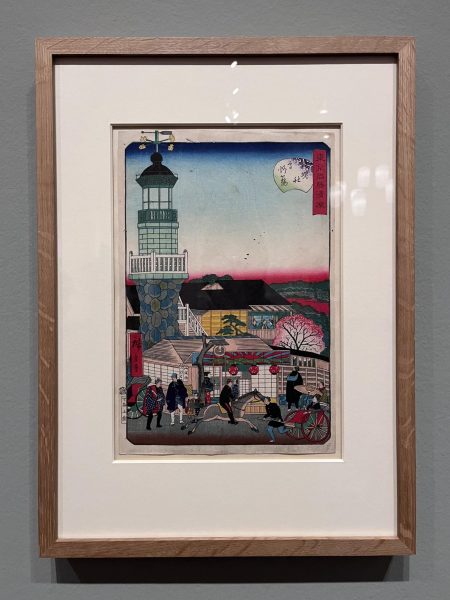
The exhibition transitions from the forest to the city, illustrating the evolution from Edo to modern-day Tokyo. Utagawa Hiroshige III’s 1872 print “Tall Light at Gongen Shrine,” captures a lively urban scene of tightly packed buildings and bustling city-goers, reminiscent of contemporary Tokyo. The vibrant, almost technicolor palette belies its historical origin, and the light tower’s top extending beyond the frame subtly suggests the city’s inevitable growth.
The rest of the room showcases contemporary city scenes and art, including a display of clothing from Harajuku. It even includes a kimono fit for a dog! There are covetable home goods themed on pop culture icons, including a Hello Kitty rice cooker, a Doraemon plush and an Astro Boy figurine. Visitors will also find Pokémon memorabilia and popular manga such as “Demon Slayer” and “Tokyo Ghoul,” offering a sense of familiarity before concluding the exhibit.
Take your own journey!
The Frist Gift Shop, though not part of the exhibition, feels like its extension. It offers a variety of Japanese and Japanese-inspired merchandise for visitors to take home, including Hello Kitty products, manga and woodblock prints.
The “Journey Through Japan” exhibition, designed by the Victoria and Albert Museum in London, is thoughtfully arranged. Interactive stations for origami folding and manga drawing add variety and engagement, making it enjoyable for both adults and younger visitors. The juxtaposition of historical and modern elements highlights how stories, symbols and artistic styles have evolved over centuries while emphasizing the environmental factors that shaped them.
“Journey through Japan: Myths to Manga” runs through Feb. 16, 2025. As the saying goes, it’s not the destination — it’s the journey. Make this imaginative and dynamic exhibition part of yours.

